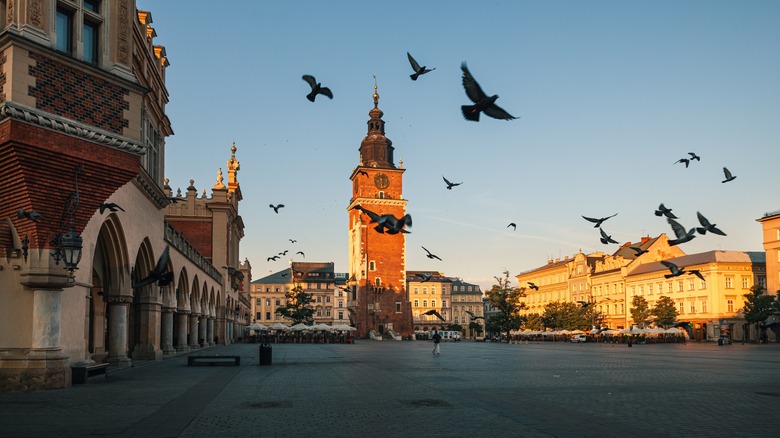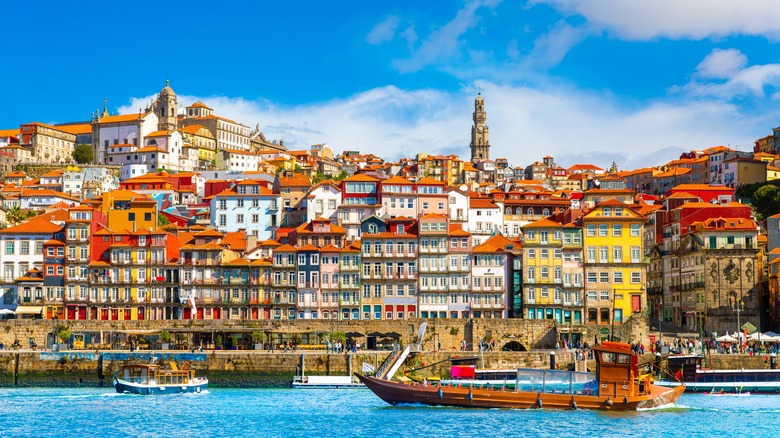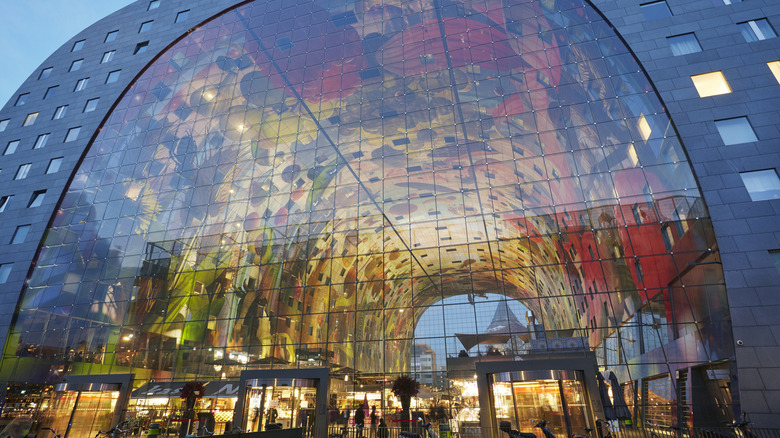The More Affordable Type Of European Cities With Fewer Crowds Rick Steves Says He Prefers
Paris is an incredible city. The problem is that the whole world knows it — especially the tourist-focused businesses and accommodation operators in Paris. Fortunately, European travel expert Rick Steves has the solution to this problem: Visiting Europe's "second cities." In a perspective written for the Washington Post, Steves recommended spending less time in the continent's marquee cities and more time in places outside of the spotlight.
His stalwart theory suggests these cities' silver statures preserve all the good parts of traveling to a European city — world-class eats, efficient public transport, and shaded squares brimming with conversation — while staying less touristic and cheaper than the A-listers. For every Athens, London, and Warsaw, there's Thessaloniki, Manchester, and Kraków, the city Steves famously called "the Boston of Poland." Traveling to Europe's second cities, he explained, is like taking your next vacation in Tacoma instead of Seattle, feeling that these alternative options deliver a "more honest cultural experience."
Second cities show us what can be, unburdened by what has been. While these cities might not have the iconic photo stops and world wonders of more famous destinations, they'll expose you to a version of the country that isn't putting on a show. "Unshackled by the obligation to be their country's role model," Steves wrote, "second cities are free to just be themselves."
Rick Steves' favorite European second cities
Steves specifically shouts out Porto and Glasgow in the article, while providing a list of viable candidates in France and England. He recommended heading to spots like Lyon and Marseille for your next French getaway or places like Manchester, Birmingham, Bristol, and Liverpool on your next British Vacation. He also acknowledged Antwerp, Belfast, and Hamburg. While he didn't mention Kraków in this article specifically, in the past, Steves called Poland's second city one of his top 3 favorite cities in all of Central Europe.
The options he mentions should give travelers a genuine taste of European city life without the overwhelming crowds you might run into in Europe's more famous megalopolises. For instance, while he isn't shy about saying Lisbon is one of the best foodie destinations, he says Porto has its own delightful food scene and a fraction of the crowds. He even believes these cities can be more entertaining than their more famous alternatives. Locals in Glasgow told him, "We have more fun at a funeral than people in Edinburgh have at a wedding."
The best part is that these cities are usually a direct train ride away from their counterparts, making them easy to add to your itinerary. Steves recommends splitting time between iconic cities and his favorite lesser-known stops. If you have four days planned in a marquee city, consider cutting your stay short by a day to experience a nearby second city. If you have four days in Italy, for example, spend three in Rome and one in Milan, a major second city that is also the second most walkable in the world.
The main appeal is smaller crowds and lower prices
Steves says his favorite second cities were "once the center of an industry that fell on hard times. Or maybe they have a long legacy of always playing second fiddle." He enjoys rooting for, staying in, and exploring Europe's underdogs. It also helps that these second-tier destinations often offer a more budget-friendly experience, as you can sometimes expect to pay less for accommodations, dining, and attractions.
Just look at Rotterdam in the Netherlands, as Steves has called this second city "Europe's showcase of bold modernity." Some reports estimate that the average nightly hotel cost in Amsterdam is $131, while the average night in Rotterdam is $91. That's $40 per day you can reallocate to other parts of your vacation. Crucially, second cities are more affordable without offering a significantly worse experience.
It's important to note that you can't always just pick a country's second most populated city and expect this practice to work. Some country's second cities are comparable to their first. Barcelona is technically Spain's second city in terms of population, but it is more expensive to visit than Madrid. In Spain, a second city is like a third city, such as Valencia, Sevilla, or Malaga. Generally, though, picking a city that might be on the map locally but not internationally can lead to beautiful surprises. Imagine streets bustling, not with the sights and sounds of travel shoes and tour guides, but with the hustle and bustle of everyday life.


